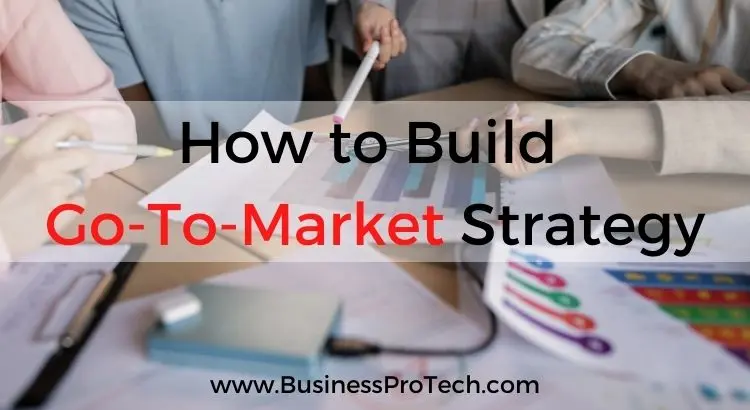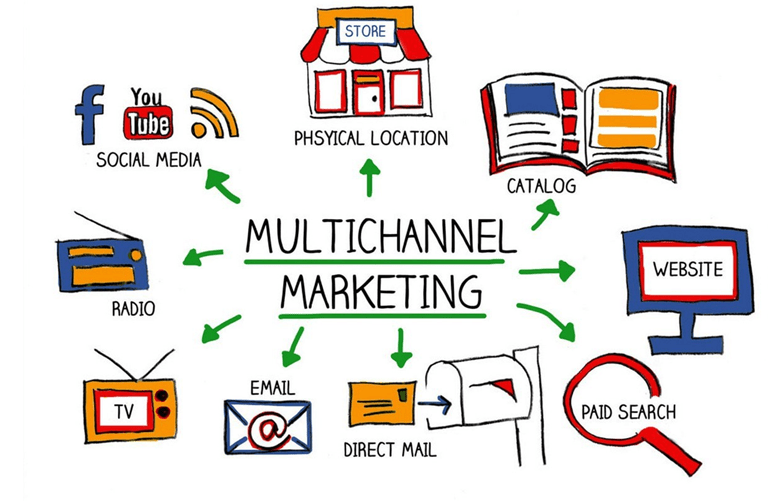A proper go to market strategy is the key element for product lunch success. Although it may seem challenging at first, there are multiple elements that can help you transition the stages to work within the strategic framework and how adapt that methodology to meet your project’s demands.
In this article, we have jotted down all the tips to create a well-thought-out, realistic, and efficient go to market plan if you want to prevent potentially costly delays.
Before we dig in, let’s first learn about the go-to-market strategy meaning.

What is a Go To Market Strategy?
A go to market strategy is a detailed plan used by firms to launch a new product or a service. Overall, its purpose is to frame the conditions in which the product or service gets to the hands of a customer, highlighting each step of the road.
Some people may agree that there are points in common between a go to market strategy and a business plan. However, there are differences as the go to market model is defined via milestones with clear deadlines while at the same time considering product distribution, funding, and the market to tackle.
Establishing a go to market strategy requires a lot of time to research and plan, but when it comes to introducing the plan, you can benefit from a go to market strategy template to prepare a powerful presentation, easy to understand by the audience.
Go To Market Strategy vs. Marketing Strategy
A go-to-market strategy strongly emphasizes launching new products or entering market opportunities. Its only goal is to ensure efficient product positioning, ensuring that potential buyers recognize the value of your service or product.
In contrast, a well-defined marketing strategy outlines every step a company takes to establish its brand, spark interest, and get its goods in the sights of its customer base.
Steps to Build a Go To Market Strategy
As mentioned before, a well-crafted go to market strategy is a guarantee of a successful product release. Therefore, to build an effective go to market strategy, consider the following steps:
Building an Ideal Customer Profile (ICP)
Your ideal customer is the one who you believe is likely to buy your product to solve their problem. Therefore, building an ICP will enable you to plan in the right direction. Consider the following characteristics to build an efficient ICP:
- Demographic: If you plan to sell in the B2B market, identify your target industry. Whereas, if you are targeting individuals, then define the specific in which your ideal customer falls, like a beauty line may target women between the ages 20 and 40.
- Geography: The location of your ideal customers, where do they live?
- Size: This would only be a matter of concern in B2B sales. Here identify the business size you’re targeting. As in how many employees are currently working.
- Budget: Consider the price your ideal customer would have to spend to access your product.
- Decision-making factors: Identify the factors that influence your customer to buy your product. It may be a published review from the other person who has used your product or anything else.
- Pain points: Find out the specific frustrations your ideal customer has. For instance, customers who spend their time and energy trying to manage their budget with spreadsheets would be targeted by a company who’s selling financial planning software.
- Preferred media: Identity through which media does your prospect absorb information? Is it social media, magazines, or any other?
Competitor and Market Analysis
Defining your target audience makes you check off the first and the essential step of your go to market strategy checklist. Next, you need to do some market research to ensure a need for your product and less competition concerning it.
In order to evaluate where your products fit in this competitive market, find the answers to the following questions while you conduct research:
- Who is already offering similar features to your products?
- What are your competitor’s target audiences, and which geographic regions are focused on them?
- Are people searching for a product like yours, or is the market oversaturated?
- What makes your product different from the others in the market? What unique features are not to be found in other products?
Delivering a Powerful Message
Another important step of the go-to-market strategy is to make a powerful message to persuade your potential customers to buy your product.
Remember, the best effective message would communicate your product’s value to your prospect in such a way that it addresses their problems. This is only possible if you speak to them in their language, so pay attention to the words they use while discussing their ambitions and areas of suffering.
Besides this, it would be beneficial to look up to the renowned competitor and evaluate how your ideal customers perceive them. Understand the messaging on their website and how they have positioned their offerings.
This way, you’ll get an idea of how things work. Note down the do’s and don’ts so that you don’t lose out on anything essential while you lay out a message to speak to your ideal customers.
Recreating the Buyer’s Journey
At this point, you can map out your buyer’s journey, which is an important element of content marketing. It enables you to present the right material to the prospects at the correct time.
Most frequently, a funnel with three stages is used to represent the buyer’s journey
- First phase: Customers know about their problem and are researching solutions for it. At this stage, the prospects may not know about your product. Hence, during this, you can get their attention towards your product.
- Middle phase: Customers compare your product to competing products. In this stage, you want to persuade potential customers that your product is their ideal choice.
- Last phase: Customers make the decision to buy your product. You want to persuade them to engage during this period.
Marketing Channels to Target
Now it’s time to choose your marketing channels. First, ensure the marketing platforms you select are compatible with how your target demographic likes to consume material.
For instance, you should concentrate on YouTube advertisements when your customer base utilizes YouTube more instead of advertising on other social media apps.
While on the other hand, consider using different channels with different kinds of marketing material to assist your ideal customers in progressing to the next stage of the marketing funnel.
For instance, SEO blogs might drive website visitors to the awareness stage. Likewise, tactics like offering free delivery or 50% off on your first purchase can persuade potential clients to buy your product.

Introducing the Sales Plan
Since the ultimate goal of go to market strategy is to sell products, it’s essential to plan how to convert your prospective customers into purchasers. This is where the sales strategy comes into play.
Do your research, conduct meetings, and develop a sales plan according to your business model and product. Some of the most common sales plans are given below:
- Self-service model: Customers make independent online purchases of your goods. To achieve this, all you need to do is spend money on marketing to promote your website.
- Inside sales model: Here, your sales team cultivates potential customers and persuades them to buy your product.
- Channel model: A third party offers your product on your behalf. It’s the least expensive choice, and if you work with a business that offers related goods, it might work nicely. For instance, you could collaborate with a grocery chain if you’re offering a novel kind of cereal.
Goal Setting Process and Measurement
Every successful go-to-market strategy begins with well-defined goals. You have precise objectives to work toward with goals, a deadline, and a means of tracking your progress. Without specific objectives, it’s difficult to determine whether your strategy is effective.
Consider the following goal-setting frameworks to set the measurable objectives of your go to market strategy:
- SMART goals: You can use this acronym to develop goals that are clear, measurable, doable, and realistic. For instance, when releasing a new application, you can establish a SMART goal of getting 1 million app downloads within a month
- Key performance indicators: These metrics can assist you in monitoring the development of your business goals. When implementing a go-to-market strategy for a new product, you could monitor total sales and advertisement click-throughs.
Conclusion
A successful go to market strategy depends on your capacity to develop compelling communications that appeal to your target customers to make them appreciate your product in this competitive market.
Your go to market strategy is a crucial component of your overall marketing approach. So, consider the above-discussed suggestions to convert your product concept into words and deeds that resonate with your target market. Then, see how smoothly you perform the whole marketing process.